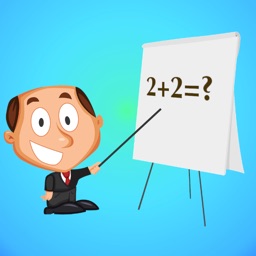To help students learn, it’s important to make math lessons engaging. They should include hands-on activities, and make connections to real-life situations.
How to Make Math Lessons Engaging
Teachers can use photographs of street signs, grocery lists or directions within recipes to present math problems to students in a way that is familiar to them. This helps them build math fluency.
1. Make Math Hands-On – Math Lessons
Hands-on math is the ideal way to get students engaged and excited about learning. It engages students in the learning process and helps them build a strong foundation for their future success.
Hands-on activities also help students develop conceptual understanding, which is a crucial part of achieving math proficiency. This is important because students need to have a solid grasp of the subject before they move on to more abstract math concepts.
One of the best ways to make math fun is to use manipulatives. This is a great way to teach and reinforce core math concepts such as addition, subtraction, multiplication, and division. It also provides students with concrete examples of what they are learning, which helps them apply the information to real-world situations.
This type of activity can be used with a wide range of materials, from crayons to LEGO bricks, and it’s a fun way for kids to practice their math skills while also being engaged in the learning process. This is especially helpful for younger students, as they need a concrete learning experience before moving on to more abstract types of learning.
Another great way to make math hands-on is to create a “math tool box” that can be stocked with a variety of materials. Instead of purchasing new tools, gather everything that is available in the classroom or at home and place them into a box that students can easily access during a math lesson.
You can even add some extra fun to this by letting students play with the items in the box during the lesson! You can have a few different game options, such as addition “war” or subtraction “war.”
For students who are having trouble with tens and ones, this is a great way to practice the concept. To make this game more fun, have students record their answers on pop-sticks.
Finally, using a “dance revolution” pad made from poster board is a fun way to practice multiplication problems. Have students place their left foot on the tens and their right foot on the units. This will encourage them to work on their coordination and speed while practicing the arithmetic skills they need for the next step in their math journey!
2. Create a Collaborative Learning Environment – Math Lesson
A collaborative learning environment is a great way to teach maths, because it allows students to collaborate and work together on problems. It also encourages students to think about their work in a different way, which is important for their learning.
One of the most effective ways to create a collaborative learning environment is to alter your teaching style. Instead of being a teacher who directs students’ learning, you become a facilitator who provides the guidance and support they need to complete the lesson successfully.
Another key element of a successful collaboration is having clear and concise objectives. These objectives should be based on your knowledge of the students in your class, their ability levels, and interactions with their peers.
Once you have established your objectives, it is time to determine how you are going to group your students for the cooperative learning activity. You can either group your students by ability level or by interest and eagerness to participate in the activities.
In general, students should be placed in groups that are homogeneous, meaning that all of the students within a group have similar ability levels. This is important because it allows high-achievers to work independently on tasks that they are not as confident with, while low-achievers can be guided through a task they may struggle with by a student with higher-level skills.
You can use the theory of Vygotsky’s Zone of Proximal Development to guide your decision making here. This theory states that children learn new skills in a “zone of proximal development”–meaning that they are near to completing the tasks independently, but they need help from other people in order to reach success.
Using this idea, you can ask students to work in small groups with other students, and you can even display their classroom work as models of how they have solved the problem. This is a great way to build their confidence and show them that they are valued as mathematical contributors in the classroom.
Students can also use the self-regulating learning strategy of monitoring, adjusting, and self-questioning to check their progress towards their goals. These are all essential skills for success in today’s world, and they are best learned within a collaborative classroom.
3. Create a Positive Classroom Environment – Maths Lessons On Line
Whether you’re teaching elementary, middle or high school math, creating a positive classroom environment will foster student motivation and engagement. There are a variety of strategies you can use to create a learning environment that’s supportive for your students, as well as for you.
One of the first things you can do to create a positive classroom environment is to ensure that all students feel safe and welcome in your class. This means establishing clear and consistent classroom rules and fostering a sense of belonging among your students.
A positive classroom environment can also help increase student confidence in their abilities and boost their self-esteem. This helps students learn to accept their mistakes and work hard to improve their performance.
Another way to ensure that your classroom is a positive environment is to make it a place where students can learn to think critically about their work and the world around them. This includes exposing them to real-world applications of their math skills and encouraging them to problem solve in the context of everyday life.
You can achieve this by having a classroom that is organized into different learning stations, with areas where students can work independently and others can have collaborative discussions. It can be as simple as putting clipboards or small group tables in a designated area, but you should find ways to make it easy for students to collaborate and share ideas.
It can also be helpful to have a space in your classroom that you will use for whole group instruction. This can be a rug, interactive board or white board that you will use to deliver instruction and encourage whole group conversations.
This area can be a great place for teachers to store their teacher-made math manipulatives and whole group instructional tools. It can also be a place for students to practice their math skills with these tools by using them in their own independent learning.
Creating a positive classroom environment takes more than posters and rules, but it can be the difference between students who are happy in your classroom and those who don’t. It requires you to make sure that you are a role model, that you treat all your students with love and respect, that you understand their needs and are sensitive to their challenges.
4. Make Math Relevant – Free Math Lessons
When students feel that the math they are learning is meaningful, they are more likely to remember it and apply it to their everyday lives. Moreover, when students understand how the math they are learning can be used in their future lives, they become more interested in the subject and will continue to seek more opportunities for practice.
Making math relevant requires teachers to find creative ways to connect the subject with their students’ lives. For example, teaching mathematical concepts that can be applied in careers such as firefighting, engineering, and medical sciences can help students see how these subjects are important to their futures. Additionally, exposing students to the real-world applications of mathematics may spark their interest in careers that they never would have thought were possible before.
Providing students with opportunities to discuss math problems will allow them to think through their solutions in a collaborative manner. This also gives students a chance to share their insights with others who may be struggling. It is also helpful to offer students feedback on their work, which can give them a sense of how they are progressing and what areas need improvement.
Another way to make math relevant is by demonstrating and labeling mathematical ideas throughout the classroom. This can be done with a variety of materials, from manipulatives to visual aids such as interactive whiteboards or videos.
This is especially important for younger students, who are not yet ready to decipher complex math. Using simple, visual explanations and showing them how the idea can be used in their daily lives will help them understand it more quickly.
A great way to demonstrate how math can be applied to their lives is by connecting the topic with a local event or problem that students can be involved in. This could be as simple as having students cite numbers that are cited in news stories or involving them in a community problem-solving initiative.
It is also beneficial to include a small group of students who are more advanced to lead the class in analyzing and discussing math concepts. This allows the more advanced students to explain the ideas and show the more basic students what they are doing wrong.

